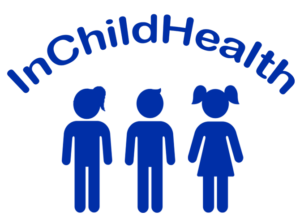Project
InChildHealth will integrate health, environmental, technical and social sciences research to identify determinants for Indoor Air Quality (IAQ) and evaluate their impact in environments occupied by school children. We will focus on chemicals, particle concentrations, microorganisms and physical parameters in schools, homes, sports halls and transport. The IAQ of these environments determines the dose received by the children and may directly influence their health and well-being.
An environmental epidemiological study and controlled interventions conducted in schools in three European cities will assess the health effects of multipollutant airborne exposures on respiratory infections, allergies, and neurological and cognitional symptoms. In addition, dose-response will be evaluated with a novel cytotoxicity testing pipeline using in vitro approaches.
The InChildHealth consortium will cover an impressive variety of geographical and cultural diversity, with targeted exposure measurement campaigns and citizen involvement in seven European countries from Northern, Central and Southern Europe and interventions in Australia.
All project results will converge in the InChildHealth Integrated Risk Assessment Tool, which will provide information on the interactions between the sources, emissions, concentrations, exposure, doses and disease for children. Besides, we will develop user-friendly and low-cost monitoring technologies and strategies (technical and behavioural) to improve IAQ and reduce disease burdens.
InChildHealth will produce many FAIR datasets on air pollutants and their main sources for indoor environments occupied by children in different climatic and social settings in Europe. Our findings will be disseminated as guidelines, recommendations and training material partly developed with children in a citizen science approach. Such material will support the IAQ regulatory framework in schools, facilitate IAQ management, and broadly promote healthier indoors.
Work Packages
WP2 Sources and routes of exposure
- Characterise the air quality in children’s environments
- Identify the sources of emissions and the influencing factors affecting exposure
- Estimate the body burdens and associated health effects resulting from multipollutant exposures
- Develop and harmonize methods and ensure high quality and comparability of the data between locations and over time
- Generate exposure data on IA pollutants, including emerging pollutants, and the factors influencing their occurrence, and data on outdoor concentrations
WP3 School environment and health
- Identification of IA emission sources and influencing factors
- Estimation of body burdens and associated health effects
- Development of a toxicity assessment pipeline and decision tree with regard to multipollutant exposures focusing on children
- Focusing on respiratory infections, respiratory, eye and skin symptoms and asthma control, neurological and cognitional symptom
WP4 Technology development and mitigation strategies
- Development, assessment and deployment of cost-effective and user-friendly monitoring devices, control strategies, and devices to facilitate a user-friendly alert system that can influence social behaviour
- Development and deployment of novel technologies to improve indoor environmental quality to reduce disease burdens
WP5 Exposure assessment and health risk characterisation
- Estimation of contaminant concentrations in environmental media (macroenvironmental transport fate modelling).
- Identification of potentially exposed populations and individuals, and specification of activity patterns (coupling of contaminant and population distribution/activity information).
- Identification and modeling of exposure pathways and contact processes (multimedia macroenvironmental modelling).
- Estimation of internal exposure and dose
WP6 Citizen engagement and wider societal impact
- Adapt and implement a citizen science methodology for indoor air quality and health
- Assess the societal impact of the active engagement in the scientific process for:
- young target group in schools
- educational experts, e.g. teachers
- policymakers
WP7 Communication, dissemination and exploitation of results and guidelines
- Preparation of quality standards and guidelines, exposure-disease functions, policy briefs and training materials, supporting health promotion, disease prevention and the EU legal framework
- Communicate and disseminate results openly
- Prepare and publish FAIR datasets
- Ensure the exploitation of the project results
